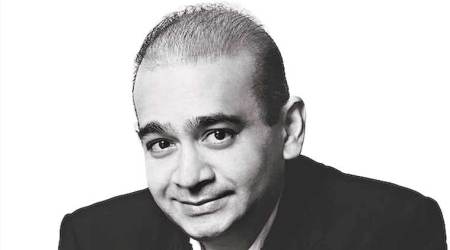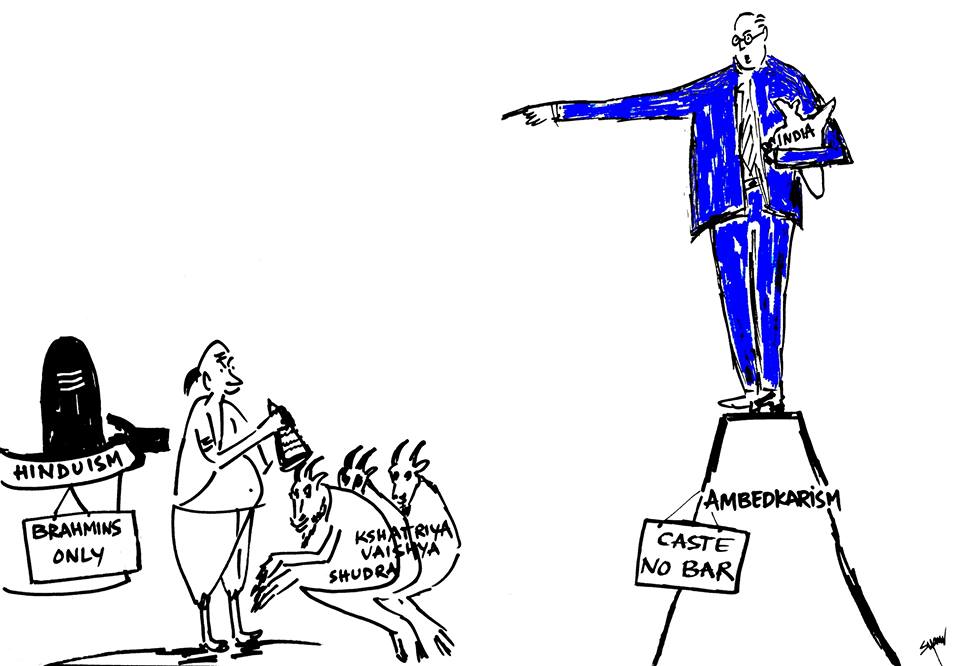P Victor Vijay Kumar
Banking and investment starts at the point when there is an acceptable line demarcating trust and mistrust. This business of earning money from somebody’s hard work and efforts, which is called Banking, is risked by a masqueraded picture of promise and assurance.The banking business channels the savings and lives on arbitration earnings by lending at a higher rate. The breach of trust happens only when there is a trust but not where there is a mistrust. Everywhere, the general parameters underlying any lending, especially corporate lending, are the past track record of a corporate promoter, booming industry scenario, consistent track of keeping up promises etc., and a loan appraisal revolving around all these. However, the standards of measurement vary across the globe. Our Banking system was worse, in terms of quality of loan processing, during 1970s – 1990s, going by the standards followed and the assessment of track record of corporates, compared to the present systems and procedures. To highlight one of the differences, there was no mention or not even a single count of staff accountability in loan sanctions, which is widely practiced and malpracticed now.

Nirav Modi
In India, there is no credit insurance (extended by insurance companies) unlike that prevalent in some developed economies like Singapore, Dubai etc. Our economy still lies in the grade of immature and emergent economies list. The quality of entrepreneurship here has feudal qualities too. The corporate governance principles are least believed in in such economies. The task of chasing and risk-taking assumes more priority over management principles, which remain as contingent objectives.
US has seen several scams like Enron, much bigger in size than Mallya, Nirav Modi, Deccan Chronicle, Satyam etc., though the same does not match in terms of the frequency of occurrence (of scams). India built up institutions not with intentions to impose stringent discipline on the user base but to facilitate all well-risk taking development oriented industrial enterprise. As of today, Reliance, which grew up on this pile of advantages, has not defaulted one single day in servicing loans to Banks but still cannot be termed as most the ethical company in Indian industry despite its long serving history. The initial days of tax evasion, monopolising and insider trading has been a well known secret of Reliance Industries. The Indian institutional structure encompassing IDBI, IFCI and ICICI have let this sail because the objective of development banking was to ensure reasonable sustenance of industrial enterprise considering various bottlenecks the country was and is facing, like poor capital availability, bureaucracy, corruption, inefficient human resources, inferior technology etc. The Indian economy is being caught in a genuine dilemma of development and imposition of corporate indiscipline. Only recently, couple of days back, RBI came out with a “Do or Die” policy in respect of NPAs which would substantially induce in banks a culture of insecurity denting the objective of development.
Nirav Modi’s scam details
Various media sources explain the details in various forms with varied figures and facts. However, commonly, the following happens to be the broad contours of what transpired in the entire episode
- Nirav Modi’s company keeps importing Diamonds/Ornaments from various importers through a Letter of Credit arrangement (meaning buying goods on credit guaranteed by bank. Will explain more in detail about this below) since 2011 at different points of time.
- The LC issuing Bank is PNB and it has so far issued LCs worth above Rs. 10,000 cr over a period of 6 years in aggregate.
- All these LCs were actually not paid by PNB once they matured for payment but were rolled over on further credit.
- Some overseas banks like Axis Bank made payments to the exporters abroad based an the assurance that PNB will eventually pay them as PNB was willing to roll over the credit further and over to Axis Bank. However, Axis Bank and other banks kept on extending credit to PNB as it had given a Letter of Understanding that it is going to pay these overseas banks.
In normal business sense, there is nothing out of line in the activity done here, either by PNB, or Nirav Modi or any overseas bank. Letter of Credit assures payment to the seller abroad by PNB (bank of the buyer i.e., Nirav Modi’s company). The LC is generally valid for 90 days. At the end of 90 days, PNB is supposed to make the payment and charge regular interest on the amount disbursed. However, it is a general practice that a Buyer avails ‘Buyer’s credit’ generally to save interest expenses. The modus operandi is – once PNB’s LC expires, buyer goes to some overseas bank and requests to make payment on behalf of PNB as the overseas bank charges lower interest than PNB. PNB does not disburse its loan and extends its obligations under LC through a Letter of Understanding to the Overseas Bank. Here, LC issued in favour of the Seller gets extinguished as Overseas Bank makes the payment under the same LC taking over the obligations of PNB (LC Issuing bank) as PNB assures the Overseas Bank of payment through Letter of Understanding. With this, Seller goes out of picture and, the Seller’s bank also goes out of picture as the LC is now replaced with Letter of Understanding which is issued in favour of the Overseas Bank. For Overseas Bank, in actual terms, PNB is the borrower and not Nirav Modi’s company.
How did the fraud go undetected for such a long time? As per media reports, the Letter of Understanding issued by PNB is not accounted for in its books as a liability because LC gets registered in the digital system (called SWIFT) of the bank and the account automatically gets captured as liability in the accounts while Letter of Understanding is a simple letter on the letter head of PNB and does not get reflected in the digital system of accounts. In the process, PNB charges higher commission than Letter of Credit, generally double the original charges – hence it benefits better i.e earning commission without really parting away with funds and earnings based on only one single letter. Overseas bank gets benefitted because its borrower is PNB and not Nirav Modi and, as such, it is a risk free lending. Nirav Modi’s Company gets benefitted as Overseas Bank charges him less interest as they are able to extend funds at a very cheaper cost than PNB due to risk free lending.
The process of credit extension to Buyer by Seller through Seller’s Bank to Buyer’s Bank (PNB) is pictorially depicted below for easy understanding:

The reading of the entire episode leaves several unreported questions unanswered:
* The Letter of Understanding lies in the files of PNB and should have been got reported on the exposure limits while renewing financial limits sanctioned to the company. These Loan renewal sanction notes are put up regularly to the Board every year, how can the PNB top management pose ignorance about such an issue and leave the issue to branch level manipulation?
* Even presuming that PNB top level management is ignorant, how did it go unreported for such a long time? The Bank has quarterly statutory audit, quarterly RBI audit and quarterly internal audit, so how can branch level officers manipulate this for nearly 24 quarters i.e 72 audits?
* Actually, this means that PNB has defaulted to Axis Bank’s overseas branch, but not Nirav Modi defaulting to PNB. How did Axis Bank and other 2-3 overseas banks rely on the Letter of Understanding for such a long span of time?
* There is no RBI policy on restricting Buyers’ Credit based on Letter of Understanding. Every Bank has got its own policy on extending Letter of Understanding. Are the Letters of Understanding printed on letter heads stealthily by Branch head and sent by mail to the Overseas Branch? If that’s so, the scam must be even bigger. However, it is difficult to believe that senior bank officers work in such a blatant and foolish manner, that too, for not one or two, but for tens of transactions on a continuous basis going beyond 10,000 cr.
* The bigger question is – if overseas bank has paid for it, where are the goods and where were they sold in turn? When they were sold, where were the sale proceeds credited ?
* PNB must have rolled over its limits because there must have been, at least as per records, adequate stock of diamonds in the stores. Who, and how, did the valuation of the stock and receivables and give supporting document to PNB? Did Nirav Modi give a fake certificate or a manipulative certificate? If so, who are the auditors involved along with Nirav Modi ?
These are the bigger questions which are not finding answers in the sensationalised reporting by the media. Media is interested in sensationalizing, osbcuring common sense and highlighting fraud without explanation, as laid out in the above questions. And hence, the degree of the problem of this scam significantly and substantially varies from actual degree depending on the answers to the above questions.
What do we learn from Nirav Modi’s scam?
In India, what we have is ‘Savarna Capitalism’. Large sections of the entrepreneurs are from feudal background like landlords, traders, construction contractors, arrack sellers etc turning into capitalists. The baggage they carry into the business is too heavy and the network is nearly closely knitted restricting the social capital to a few upper class and caste sections. This structurally builds entry barriers for marginalized castes to join the league. The Savarna Capitalists, largely, are closely networked irrespective of the political party affiliations. Mallya, Deccan Chronicle Venkatrami Reddy, Nirav Modi etc are just in line with the same fashion of business and the underlying confidence in defaulting to banks is of same category. The Savarna Capitalists learnt in their lives that the system can be leveraged to their favour using their social capital and thus dishonesty has turned out be a way of life for many. The capitalists who have a visible and fairly assured business ahead have contained their temptation to default killing the golden goose. The default – which is determined by ability, willingness and affordability – is a general culture in large enterprises. Essar group Ruias have been consistently topping the chart in the history of economy and banking scams. They were the largest defaulters of IDBI in the late 1990s and still managed to raise large loans all over and kept defaulting in the banking system.
The happening of Nirav Modi’s scam is actually no surprise and it is just not related to Modi or BJP alone. It is very erroneous to confine this problem only to Modi’s Government. The corporate indiscipline has been well nurtured and groomed by the Savarna capitalists and the enforceability of corporate governance is poor and institutional framework is inadequate. This is founded on the sympathy for the reasonability of taking enterprise risk by the capitalists, in the backdrop of poor economic environment and the in-built inherent challenges they face.
Before we talk about reforms in the banking system, we need to concretely work towards a better business environment and a transparent institutional mechanism. Besides, we should leave the business space open to every sect, category, gender and race of the country leaving scope for equitable development, giving rise to a stronger value system in banking which largely depends on certain belief systems. A dependable and predictable business environment is lacking in India. While this being so, Government is utilising this opportunity of non-performance to build a ground to privatize the banks. Each scam is zoomed and projected like a demon to politically convince the country that there is a logic to privatize the banks.
The Brahminical secularists, so far, in line with the savarna media thinking, are trivializing the problem and masquerading the issue of banking defaults. We must not forget that even the genuine earnings, as they seem to be, by the Savarna Capitalists are not appreciable as the ‘capitalist genuineness’ is interested in widening the chasm between class and class and caste and caste. Applying the analogy of the point raised by Thomas Piketty– each difference of 2% in GDP growth every year, would lead to doubling of the wealth gaps between classes, savarnas and others here, for every 35 years leading to growing polarization every year and thus we have spent centuries together. As long as we do not talk about equitable development and opportunity, any capitalist earnings do not give any real meaning of development in a polarised India. In that sense, Nirav Modi and Mukesh Ambani cannot be differentiated amongst their own crowd. Else, we will end up in accepting the structural fraud and isolating individual blatant fraud instances. Hence, it is very pertinent and apt asking ourselves every time we come across such a scam “Tell me…what exactly is fraud here?”
~~~
P Victor Vijay Kumar is an investment banker and is reachable at pvvkumar@yahoo.co.uk or facebook ID ” P V Vijay Kumar”.
Picture courtesy: the internet.










